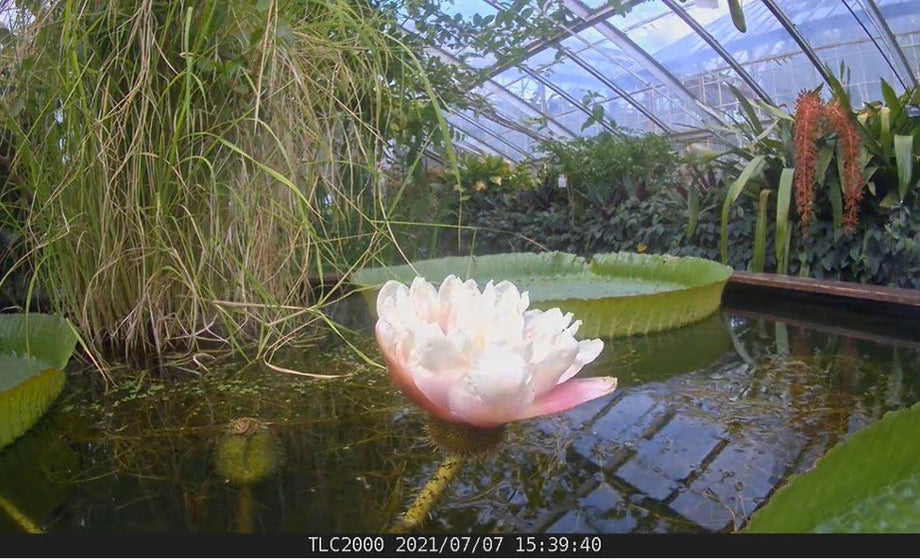巨大なサンタクルス睡蓮(ビクトリアクルジアナ)の非常に特別なタイムラプスが、 ケンブリッジ大学植物園がBrinno TLC2020カメラを使用して撮影。タイム ラプス トレジャー シリーズの一部として紹介されているサンタ クルズリリーは、ビクトリア ユリ属の 2 つの巨大種のうちの 1 つです。この花は南アメリカに生息し、ビクトリア女王の治世中に初めて栽培されたため、属名はビクトリアです。
2 月初旬、植物園のチームは古いユリの 1 本から種を摘み取り、リサイクルしたジャム瓶に入れました。種は非常にデリケートで、生き残るためには常に湿った暖かい状態にしておく必要があります。
その後数週間、種は熱帯保護区ハウスの 28 度の水槽に沈められました。小さな葉が芽生え、鉢植えの準備ができるまで、種はそこにありました。葉が出始めると、成長は飛躍的に加速し、ユリは 2 週間ごとに大きな鉢に植え替える必要があります。
5月、約2か月の成長を経て、最も強い種子が選ばれ、熱帯湿地池の巨大な1メートルの鉢に植えられました。間もなく、オオユリの葉は直径1メートルを超え、7月には多数の花芽が現れました。
サンタクルスユリには、非常に異なる特徴を持つ 2 つの独特な開花イベントを伴う特別な開花プロセスがあります。
最初の開花期には、夕方に花が開き、白い花びらが現れ、新鮮なパイナップルに似た心地よい香りを放ちます。熱帯保護区ハウスには自然の花粉媒介者がいないため、植物園のチームは絵筆を使って手作業で花粉を媒介します。日の出までに花は完全に閉じますが、翌日にかけてゆっくりと再び開きます。
2 度目に開花すると、花は美しい変化を遂げ、ピンク色の花びらを露わにします。その後、花は最後にもう一度ゆっくりと閉じ、優雅に水中に沈みます。
数か月間水に浸かった後、花茎は植物園のチームによって水面に引き上げられ、何個の種子が生産されたか検査されます。通常、花芽 1 つにつき数百個の種子があります。この時点で種子は収穫され、翌年の 2 月または 3 月まで 14 度のタンクで水中に保管され、その後プロセス全体が再開されます。
サンタクルーズスイレンは素晴らしい花であり、ブリノはケンブリッジ大学がそのユニークな開花過程を捉えるのを支援できたことを光栄に思っています。
サンタクルスユリの詳細については、 ケンブリッジ大学植物園のウェブサイトにアクセスし、 元研修生のエミリーがなぜこの植物をお気に入りの植物として選んだのかを学んでください。これは、ケンブリッジ大学植物園との提携による 3 番目の特集記事です。 希少なアマゾンのムーンフラワーと絶滅危惧種のヒスイのつるに関する以前の記事をご覧ください。
TLC2020 タイム ラプス カメラのフル HD 撮影機能と、Brinno があらゆる種類の研究アプリケーション向けにタイム ラプス ソリューションを提供している理由について詳しくご覧ください。



